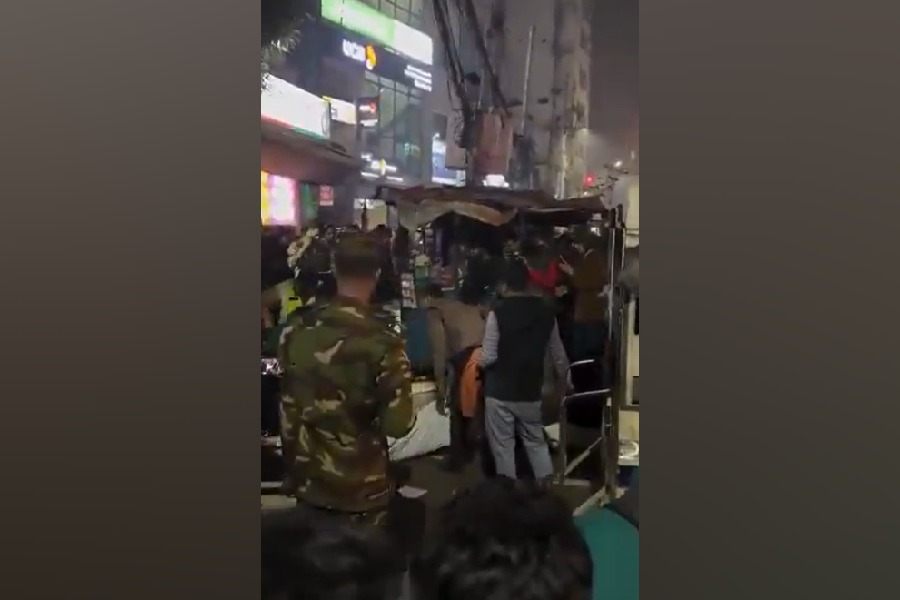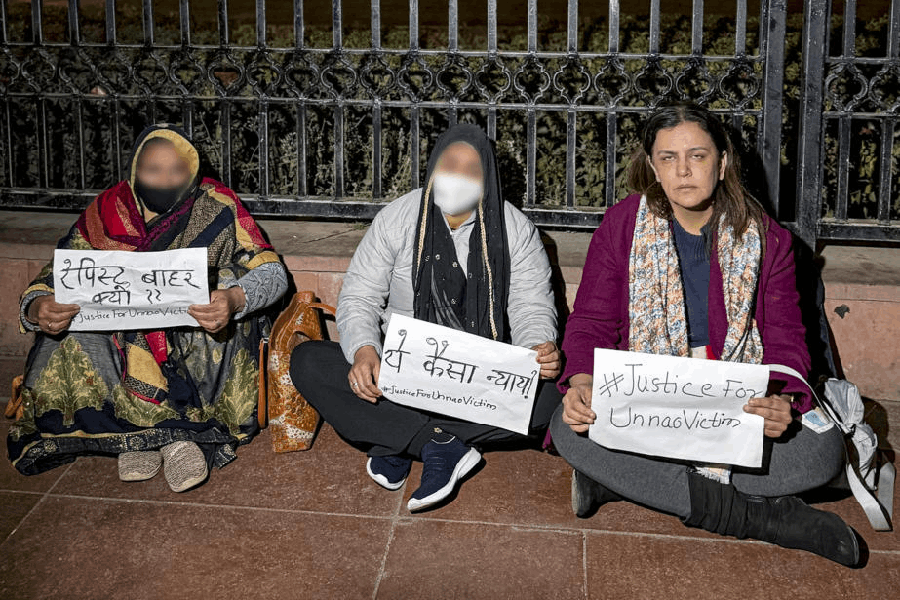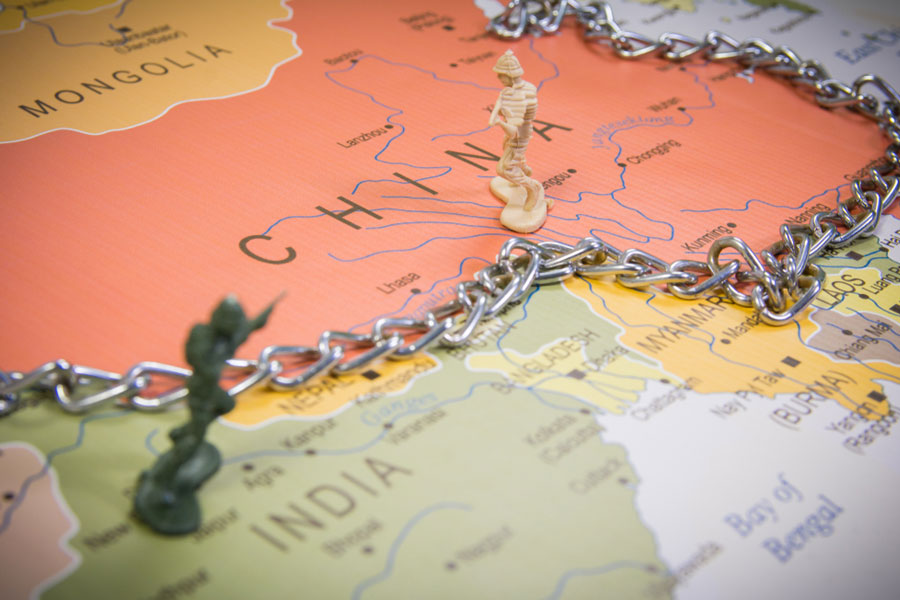|
|
Dream Villa By Dayanita Singh, Steidl, Rs 2,000
One of the eleven ‘adventures’ in Italo Calvino’s Difficult Loves is that of a photographer. This is a man who realizes very quickly that what lurks in his “black instrument” is nothing but a kind of madness. And this madness is a forking path. One path beckons outwards, towards the doomed and impossible desire to document everything that exists and happens before it is lost forever. The camera must record all reality, all history; only then would it start making some sort of crazy sense. The other one leads inexorably within, into the labyrinths out of which the eyes, windows of the soul, look at the world outside. Yet, in his studio, as he focuses the camera on his model, her body forced into a sequence of grotesque poses, the two roads, inner and outer, seem to cross again “in the glass rectangle”. It is “like a dream, when a presence coming from the depth of memory advances, is recognized, and then suddenly is transformed into something unexpected, something that even before the transformation is already frightening, because there’s no telling what it might be transformed into”.
Dayanita Singh’s Dream Villa opens, and then closes, the gates to such a realm of the unexpected. To those who are familiar with her earlier, black-and-white work (books as well as shows) — the exquisiteness of Go Away Closer (2007), the intimacy of Sent a Letter (2007), the elegiac humour of Privacy (2003) and Ladies of Calcutta (2008) — the elusive menace of Dream Villa, moving unpredictably from the tender to the lurid, moonscape indistinguishable from mindscape, will come as a shock. The desolate expanses of light turning into colour in Blue Book (2009), her first body of colour work, have intensified, in Dream Villa, into a world of the night whose denizens become something other than human in the uncanny light of a radically estranging gaze. The unexpected is part of this book in a material sense as well. The use of daylight film after dark, long exposures, and the refusal to go digital mean relinquishing control over the relationship between vision and image. So, as in Blue Book, the accidents of how different kinds of light react with the chemicals in the film begin to determine the nature of the image on the page. This creates a language of colour, darkness and light that is disturbingly at odds with one’s normal, waking memories of the night. Madness, as Calvino knew, lurks in the by-lanes of the photographer’s art because the mind is a blacker instrument than the camera. Dream Villa risks this lunacy as it records, with a relentlessness that dispenses with comfort, how the modern moon quietly withdraws the tenderness of her protection from the brilliant cruelties of artificial light.
Such a technique of unsettlement owes as much to the art of book-making as to photography. (Hence, Singh’s personal homage to her publisher, Gerhard Steidl, in the form of an exhibition of Steidl books as part of the Dream Villa show at Nature Morte, New Delhi.) Dream Villa, the book, is an artefact in its own right. It asserts its independence from the showing of the work as exhibitions in London, Delhi, Mumbai and Madrid by deliberately disrupting the viewer’s memory of the lushness of each of these shows. It looks like a slim, small, rectangular engagement-diary with a plain, dark-blue cover. The cover and title-page give us the title, author and publisher, with credits at the back. There is no other form of writing in the book — no page-numbers, captions, locations, dates or essay. Breaking the golden rule of photobook-making, each of the nearly-60 square images is guttered down the middle and bled to the edges of the book. The reproductions are of exquisite quality, but each photograph is split into two and printed on paper so glossy that all sorts of reflections come in the way of viewing it properly: each half of the image reflecting the other half, the reader’s face and hands reflected on both pages. The binding prevents the book from staying open on its own. So the only way to look at it is to ‘read’ it, to hold it open in your hands and keep turning the pages, but without the help of words or numbers. So, it is not only a photo-book or an artist’s book, but also a work of fiction — a novella, or a collection of interconnected stories like Jhumpa Lahiri’s Unaccustomed Earth or Kazuo Ishiguro’s Nocturnes.
In Dream Villa, because of the continual splitting of the images, you are often not sure if you are looking at one photograph or two, and sometimes the most beautiful or centrally-placed details of an image disappear into the gutter, which is like an abyss of darkness in the middle of every opening. It places, physically, at the heart of the book an oddly unbeautiful — and, I suspect, wilfully annoying — sense of interruption, doubleness and division. With its seemingly innocuous slightness, and a mix of seduction and suggestion, Dream Villa draws the reader into this schizophrenia at its core, into its obsessive mapping and unmapping of the night. Reading it is like losing one’s way in the terra semi incognita of somebody else’s dream.
In the third volume of Proust’s In Search of Lost Time, the narrator finds himself unable to sleep in an unfamiliar hotel room while visiting a town he does not know well. This sets off a fearfully precise, slow-motion description of those moments of absence from the real when insomniacs sense that their efforts to sleep are finally beginning to work, but they are yet to actually fall asleep: “They notice that the preceding minute has been dulled by a pattern of thought in strict contradiction to the laws of logic and present reality, this short ‘absence’ indicating that there is now an open door through which in a while they may perhaps be able to escape the perception of the real.” Dream Villa opens this door, which seems to lead out of the cherished interiors of Privacy (and its kindlier respect for the real), into an outside that is somehow more inside than Privacy’s interiors. This is an escape, a slipping away from reality towards its transfiguration in the inner light of perceptions cut loose from the logic of the actual world. “[It is] a great step forward,” says Proust’s narrator, “when we turn our backs on the real”.
Voyaging out into this night could feel and look like madness, for inner and outer are confounded in that wilderness past the gates. The unhomely vistas that open out from the solace of habitable rooms seem to achieve their maximum possible expansion here — beneath the visiting moon, but lit by other lights or burning with stranger colours. Another house opens it gates somewhere in this place without a name, and other inmates beckon. “Did he want to photograph dreams?” Calvino asks of the half-mad photographer in his story. “The suspicion struck him dumb...”











